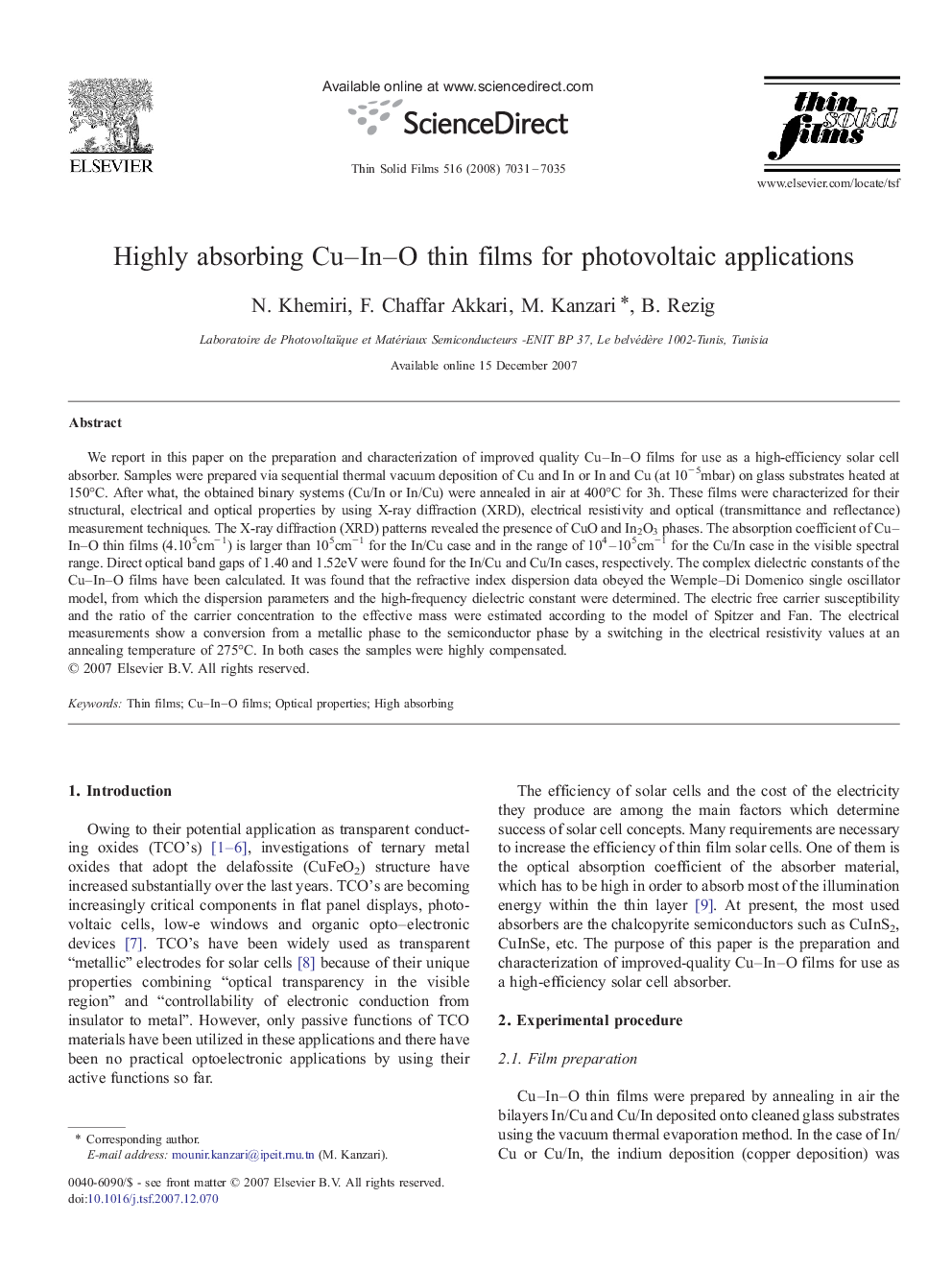| Article ID | Journal | Published Year | Pages | File Type |
|---|---|---|---|---|
| 1674467 | Thin Solid Films | 2008 | 5 Pages |
We report in this paper on the preparation and characterization of improved quality Cu–In–O films for use as a high-efficiency solar cell absorber. Samples were prepared via sequential thermal vacuum deposition of Cu and In or In and Cu (at 10−5mbar) on glass substrates heated at 150°C. After what, the obtained binary systems (Cu/In or In/Cu) were annealed in air at 400°C for 3h. These films were characterized for their structural, electrical and optical properties by using X-ray diffraction (XRD), electrical resistivity and optical (transmittance and reflectance) measurement techniques. The X-ray diffraction (XRD) patterns revealed the presence of CuO and In2O3 phases. The absorption coefficient of Cu–In–O thin films (4.105cm−1) is larger than 105cm−1 for the In/Cu case and in the range of 104–105cm−1 for the Cu/In case in the visible spectral range. Direct optical band gaps of 1.40 and 1.52eV were found for the In/Cu and Cu/In cases, respectively. The complex dielectric constants of the Cu–In–O films have been calculated. It was found that the refractive index dispersion data obeyed the Wemple–Di Domenico single oscillator model, from which the dispersion parameters and the high-frequency dielectric constant were determined. The electric free carrier susceptibility and the ratio of the carrier concentration to the effective mass were estimated according to the model of Spitzer and Fan. The electrical measurements show a conversion from a metallic phase to the semiconductor phase by a switching in the electrical resistivity values at an annealing temperature of 275°C. In both cases the samples were highly compensated.
